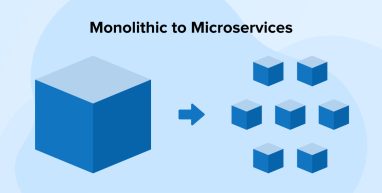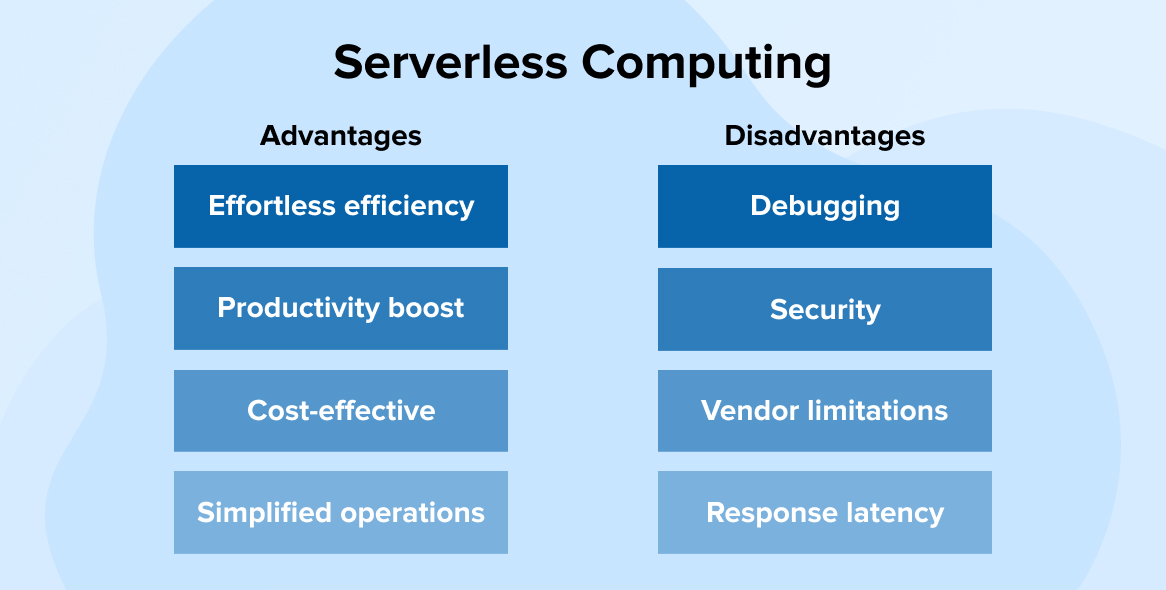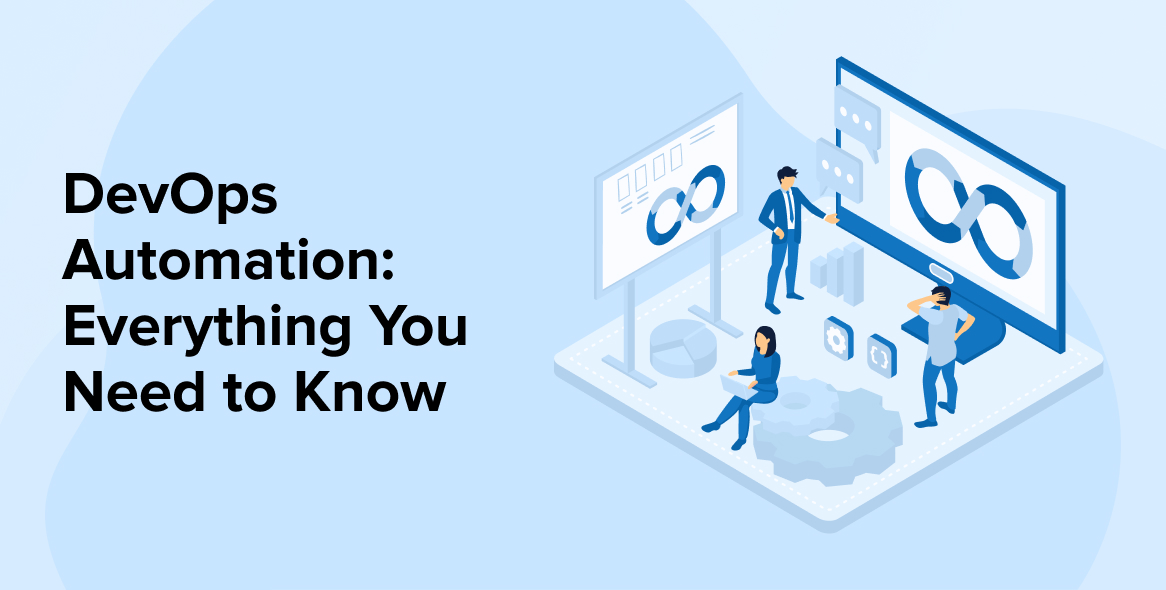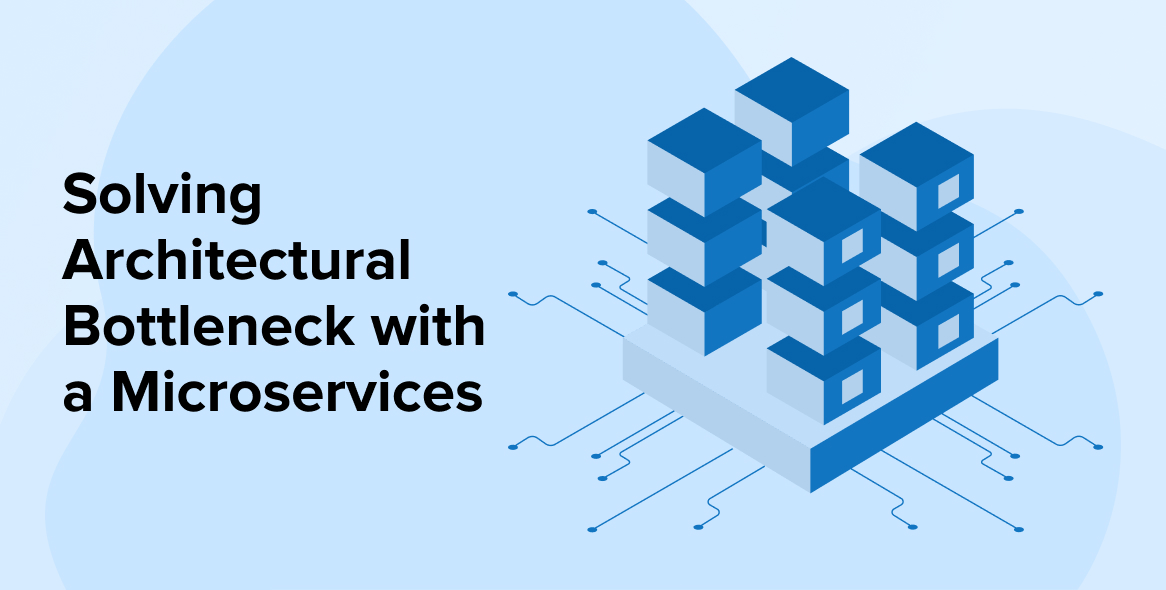
When monolithic applications hinder growth instead of fueling it, consider it a sign to transition to a microservices architecture. There can be many reasons for this; the monolithic app might have become too large to handle, utilize outdated technologies, contain legacy code, struggle to scale, fail to integrate with modern technologies, exhibit rigidity, single point of failure.
Every organization has its reasons to move on from a monolithic to a microservice, but all of them need the right migration strategy to ensure success. A reliable software development company can help you assess your resources and requirements to prepare a suitable migration plan.
It is a daunting task to manage everything on your own, especially in projects involving distributed systems and networks. You need domain experts in such cases.
This article consists of a step-by-step guide to migrating a monolithic app to a microservices architecture, along with the best practices that can help you succeed.
1. Monolithic Architecture
Monolithic architecture is a traditional software model that acts as a single unified unit that is independent and self-contained. It is usually large and complex, with a single computing network and a common codebase to process all the tightly integrated functions.
You have to update the whole stack to make even a little change in the application. This involves accessing the codebase, implementing the changes, and releasing an updated version of the service-side interface. This can be overwhelming and time-consuming.
It’s easy to use monolithic architecture when you have a small app or an easy-to-maintain codebase. In such instances, you can build, update, and launch quickly.
2. Microservices Architecture
An app with a microservices architecture is built and deployed independently loosely coupled services. Each service represents a small aspect of the business domain, so they are smaller in size. Hence, they can be improved through the CI/CD pipeline.
Every service is created by different teams using different programming languages. All these microservices are integrated and communicate using APIs.
This architecture adopts a modular approach, with each service having an independent data storage system. You can easily scale your app horizontally when using the microservices architecture.
3. Monolithic vs Microservices: Key Differences
After going through a brief overview of both architectures, it’s time we learn about the critical differences between them.
| Monolithic | Microservices | |
|---|---|---|
| Deployment | The entire app is released as a whole. | Iterative deployment, as each service is built and released independently. |
| Scalability | Difficult as the whole app needs to be redeployed. | Every microservice can be scaled individually. |
| Testing | Easy end-to-end testing. | Difficult because of the need for individual testing of each service. |
| Flexibility | Limited tech stack. | Versatile with different services employing different tech stacks. |
| Security | Security concerns are concentrated as the app works as a single unit. | Various security concerns due to multiple independent services. |
| Adoption | Easy to implement. | Requires a wide range of expertise, especially with distributed systems. |
| Resiliency | Single point of failure. | High fault tolerance due to their distributed nature. |
4. Steps to Migrating From Monolith to Microservices Architecture
This section provides a step-by-step guide for migrating your monolithic system to a microservices architecture. It offers a detailed explanation of how to navigate through the intricacies of the migration process and suggests relevant tools that can help carry out necessary operations.
4.1 System Assessment and Migration Planning
First, understand your existing monolithic system. You can’t migrate your app to microservices without knowing it properly, as doing so without proper knowledge can lead to serious consequences. Conduct an audit review of your application to assess its codebase, technology stack, architecture, and deployment structure.
Learn how different modules are organized and how they support your business operations. Identify any third-party integrations to analyze their dependencies across different modules, libraries, and databases.
After a thorough assessment of your monolithic system, determine whether you want to migrate to microservices or not. If yes, then what are the reasons? It is important to set clear goals and KPI metrics for the migration process.
So, consider why you need to migrate? To reduce the downtime, improve scalability, or isolate faults? Decide on the KPIs according to your migration objectives.
4.2 Define Service Boundaries and Domain Grouping
Use Domain-Driven Design (DDD) principles to define the clear, logical boundaries for your microservices. Each service is based on its business capabilities, maintaining low coupling and high cohesion.
Group these services based on their core business domains. Define the contexts clearly and make sure no responsibility overlaps across different services. It is recommended that you don’t break any services into too small units prematurely.
Maintain the balance of granularity with operational workflows and business processes by focusing on meaningful separation. This stage is about designing microservices based on your current system assessment and aligning them with real-world business functions.
Further Reading on: How Domain Driven Design Works in Microservices?
4.3 Architecting Microservices
After establishing the logical boundaries for microservices, it’s time to get the technical design. Designing microservices includes implementing suitable architectural patterns, creating independent data layers, and defining clear communication protocols for microservices.
4.3.1 Service and API Design
Every microservice must handle a single business functionality to ensure system maintainability and scalability. Use Protocol Buffers for gRPC or OpenAPI/Swagger for REST to define API contracts and allow independent service development. Additionally, employ a suitable tech stack for every microservice based on its domain to maintain DevOps consistency across different environments of microservices.
4.3.2 Database Strategy
In a microservices architecture, every service needs a separate database to avoid cross-service dependencies, as they handle their own data. Choose an appropriate database depending on the type of service. Use event-driven communication tools like Kafka in cases where data needs to be shared between services.
Microservices publish the event, which other services listen to and act upon. The services do not make any direct calls. Saga pattern manages every transaction that spans multiple databases and services.
To implement an effective migration from a monolithic to a microservices architecture, first extract the data from non-crucial modules, reshape it for the new schema, and gradually phase them out of the old system. This way, you can keep the services and system stable during the transition.
4.3.3 Communication Strategy
Use different communication tools for different instances. For example, REST and gRPC are used for real-time response between services, and Kafka and RabbitMQ are used for notifications and updates.
There are internal and public APIs for communication purposes. The first, internal, provides flexibility, while the public API offers better security. Next, we have an API gateway to handle routing, rate limits, etc. Every client request goes through this gateway.
While inter-service communication is necessary to keep the system fully functional, microservices architecture also demands that each service remain independent and resilient enough to overcome maintenance and scalability issues.
4.4 Set Up the Infrastructure and Deployment Pipeline
We designed microservices and an appropriate data strategy, but they need an automated, scalable, and reliable environment to run in, one that ensures independent deployments and frequent releases of microservices.
Packaging every microservice into separate containers helps maintain consistency across development, testing, and production environments. Containers are handled, monitored, and scaled using orchestration platforms such as Kubernetes. They manage rolling updates, auto-scaling, load balancing, and service discovery.
To automate the process of building, testing, and deploying microservices, set up a CI/CD pipeline using tools like Jenkins and Azure DevOps. It is important to create and maintain separate environments for development, testing, and production. Configuration management tools and environment variables help switch settings to cope with changing requirements.
Use tools like Datadog and Prometheus to establish centralized logging and performance monitoring. They assess your distributed system for potential bottlenecks in your distributed system and address them quickly.
4.5 Security and Compliance
In monolithic architecture, the focus on security remains on the overall application level. However, when migrating to microservices, it needs to be distributed and kept consistent across every service. Ensure that each microservice authenticates users, protects the data, and complies with the required standards independently.
4.5.1 Authentication and Authorization
Use OAuth 2.0 and other protocols to apply a unified identity provider that streamlines user authentication across all microservices. Implement a Role-Based Access Control (RBAC) system that defines individual roles and permissions provided to users, allowing them to access only necessary resources. Also, use TLS to encrypt and authenticate internal communications between services.
4.5.2 Data Protection and Compliance
Sensitive business or user data must be protected by encrypting it both at rest and in transit using database encryption and HTTPS, respectively. Manage sensitive data through dedicated security tools or secure vaults to avoid data leakages.
Moreover, it is important to comply with relevant regulations and industry standards. For example, apps handling data of EU citizens must comply with the General Data Protection Regulation (GDPR), whereas apps processing payment information are required to comply with the Payment Card Industry Data Security Standard (PCI-DSS) in the finance sector.
4.5.3 Monitoring and Auditing
Conduct frequent security audits to assess your system for potential vulnerabilities and security risks. Monitor user and system activities continuously and keep a detailed log for the same. It helps identify anomalies and ensure accountability.
4.6 Testing & Deployment
As every service works as an independent unit, it becomes necessary to check if they work well both independently and in collaboration with other services as a unified system. To examine the stability and interoperability of your microservices, conduct thorough testing that includes different test types, such as unit testing, integration testing, etc.
Use load testing tools such as JMeter and Locust to stress-test your services. Employ software performance testing and container orchestration for secure and scalable deployment. There are a plethora of deployment patterns available. Pick an appropriate one that suits your requirements and ensures that your services or system remains stable in the production environment.
Put proper error handling mechanisms in place, along with a circuit breaker pattern that prevents cascading service failure. You should also ensure backward compatibility that allows the monolith system to communicate with new services until it is completely replaced.
4.7 Monitoring and Observability
Development teams can understand the system behavior, identify issues early, and ensure enhanced performance in the microservices environment.
Use service-specific metrics to collect quantitative data like resource utilization, response time, and error rates to evaluate the health of each service. Creating a centralized logging platform where activities of all services are logged enables efficient analysis and troubleshooting.
Every service in your system handles multiple requests, and many requests traverse through multiple services. It is important to track all of them to understand service interactions and pinpoint latency issues.
Additionally, put an alerting system in place that warns you when the pre-defined thresholds are breached. You can set prompt responses to address these issues when they arise. Monitor everything from an interactive dashboard with a real-time visual representation of system analytics.
5. Reasons to Migrate From Monolithic to Microservices
Every organization has its own reasons for moving away from monolithic architecture. Some of the common reasons that companies seek when they decide to migrate to microservices are:
5.1 Scalability
Scaling up or down the microservices application is easy, depending on the changing requirements. This architecture supports partial scaling. If any microservice experiences a high load, more resources can be allocated to the specific component or service. This improves overall app performance and responsiveness.
5.2 Flexibility
Different programming languages, frameworks, and tools can be used to build and deploy different microservices. This flexibility also allows you to build cross-platform applications. Moreover, you can easily add or remove services from the application easily and with minimal impact on the overall system.
5.3 Fault Tolerance
Due to the modular approach, the failure or downtime of a microservice doesn’t affect the performance of others. So, the overall application will still work even if certain microservices are down. Similarly, code errors are also isolated within individual microservices and are kept from impacting the entire system because each microservice has a separate business logic. This makes microservices architecture more tolerant of failures.
5.4 Enhanced Data Management
Each microservice has its own data storage mechanisms. This approach simplifies data ownership, enhances the scalability of databases, and provides real-time data analysis. This concept of distributed databases helps avoid compromising performance because of its complex data management systems.
5.5 Cost-Effectiveness
The cost of microservices architecture is significantly lower in comparison to monolithic architecture in the long run. It is primarily because, in microservices, you only pay for what you use. On top of that, adding and updating services isn’t disruptive in a microservices architecture, allowing for more flexibility. Also, the issues can be easily identified and quickly resolved because microservices are small and isolated. Along with that, reduced downtime and optimized resource allocation also help reduce the overall costs.
6. Tips for Migrating Monolithic Applications to Microservices
When you follow the above step-by-step guide to migration to microservices, it is important to do it by implementing the best practices. Here are a few tips to help you get the most out of your migration project.
6.1 Factor in Security at Every Stage
Security should be an integral aspect of every software project. Microservices are a combination of small, independent services. The security risks may differ from service to service in a microservices architecture. Therefore, it is necessary to implement robust security measures when migrating the app and its associated data.
6.2 Monitor the Application Before, During, and After Migration
During migration, you also need to monitor the performance of the features and functionalities of the application. You have to assess them before migration to see what modifications they need for compatibility with a microservices architecture.
Moreover, if you are running your services during migration, you have to monitor the app to ensure the user experience isn’t hampered. Even after migration, you have to use performance benchmarks such as Service Level Indicators, Service Level Objectives, and Service Level Agreements to check if the services work up to expectations.
6.3 Automate Wherever Possible
Migrating a large and complex monolithic application to microservices is an overwhelming task. Automating various aspects of the process, such as integration and deployment of services, would increase the speed and efficiency of the project. It also helps in quicker identification and resolution of issues within the system.
6.4 Install an API Gateway or HTTP Reverse Proxy
To implement an effective microservices architecture, it is essential to install an API Gateway or HTTP Reverse Proxy. This setup allows for the deployment of microservices to handle the migrated features. Meanwhile, the monolithic applications would serve the non-migrated features. Therefore, the incoming traffic will not only be segregated in the microservices architecture, but all the requests must be routed based on their nature.
Depending on conditions like URI patterns, feature flags, cookies, and authenticated users, you can forward API calls using an API gateway. On the other hand, you can use the HTTP Reverse Proxy to manage the same thing for HTTP requests.
Until the migration process is completed, most of your traffic will go to the monolithic application anyway because it still handles the user interface.
The proxies and the gateways would still be there even after the completion of the migration process. Because they provide load balancing and forwarding, these components are critical to any microservices application. In case of a service failure, they act as a circuit breaker, ensuring system resilience.
6.5 Use Feature Flags
When you are migrating a system’s functionality, you sometimes have to turn feature flags on and off without redeploying it.
When you enable the migration with the feature flag, your workflow will look like the below:
- Identifying the functionalities of a monolithic application that needs to be migrated to microservices.
- Use the feature flags to wrap the identified functionalities and then redeploy the monolith application with these flags in place.
- Build and launch the microservices application that will host the new functionalities.
- Thorough testing on the microservices.
- If the performance of the features in microservices is up to expectations, then disable the corresponding features in the monolithic applications.
- Repeat this process for each functionality until the whole monolithic system has been successfully migrated.
The feature releases are easily decoupled from actual deployment because feature flags help deploy inactive code to production. It also allows you to toggle that code at any time, giving developers a great amount of control and flexibility.
6.6 Decouple the Data
When migrating to microservices, you can deploy any microservice at any time without depending on or having a correlation to other microservices. This degree of independence necessitates that the data is not coupled in microservices applications.
Data coupling created dependencies between services. That is why every microservice stores its data in an independent database. The microservices require the locality of data to function autonomously.
Data decoupling isn’t enough. You must also employ the necessary mechanisms to ensure that the old and new data are kept in sync during migration.
7. Choosing the Right Strategy to Migrate a Monolith to Microservices
With the right migration strategy, there will be fewer problems in moving your application. You must start by evaluating your monolithic application and identifying its various functionalities. After that, determine the bounded context for each functionality or group of closely related features and business functions.
Next, it is time to prioritize the features that need to be moved first. For their migration, you have to first remove the dependencies between their bounded contexts and then isolate them into different modules. The features and functionalities of your monolithic application can be migrated in two possible ways.
- Parallel adoption: In this approach, you migrate your functionalities to the new architecture without shutting them down in the old architecture. As a result, you will be running duplicate features in both architectures simultaneously. It allows you to compare and validate whether the functionalities are working up to expectations in the new architecture.
- Phased adoption: In this migration approach, you only move a selected few features to the new system and leave others in the old monolithic application. It helps analyze the solution’s quality and restrict the issues in a specific part of the system.
Choose an approach that meets your project requirements and the organization’s goals. In some instances, you can also adopt a hybrid approach to deliver optimal results.
8. Challenges in Migrating From Monolith to Microservices
Although there are numerous benefits of moving to a microservices architecture, it isn’t an easy undertaking. There are significant challenges along the way. A few of them are mentioned below:
8.1 High Initial Investment
Using a microservices architecture is cost-effective in the long run. At the time of project initiation, you need a significant investment for establishing a team, setting up infrastructure, and refactoring the existing app. You have to set up separate teams and resources for each microservice, which can lead to a huge cost upfront.
8.2 Needs Experts Or Experienced Team Members
Migrating systems from monolithic to microservices is a daunting task. You need professionals who have experience working in distributed environments to successfully manage this transition. On top of that, you might also have to implement DevOps practices and CI/CD pipelines, which demand a specific skill set that may not be readily available among existing team members.
8.3 Complexities of Distributed Systems
Even for the experts, working with distributed systems is no walk in the park. Since these microservices are loosely coupled with each other and communicate using APIs, which necessitates careful consideration of various factors such as bandwidth limits, security, network topology, and latency. Because of these complexities, microservices are not ideal for midsize and small companies. You would have to hire multiple teams that would simultaneously work on multiple aspects of the system, managing all at once is no small feat either.
8.4 Time-Consuming
Estimating the exact time it will take to migrate all your workloads and services from monolithic architecture to microservices architecture is difficult. Of course, you can give a rough estimate or draw out a detailed schedule. However, considering the complex nature of the project, there might be speed breakers and pitfalls along the way, resulting in delays in the project.
9. Final Thoughts
The decision of choosing an architecture depends on your project requirements. A monolithic architecture is more suited for small and straightforward projects, whereas a microservices architecture is suitable for larger and more complex projects.
Moreover, the decision to migrate should be taken seriously and with thorough planning and consideration. There are various factors to address, from feature performance to data security. You must only pursue this daunting task if it provides better business value and proves to be beneficial in the long run.
FAQs
What are the challenges of monolithic to microservices migration?
Cultural adaptation, data migration, and architectural complexity are some of the challenges of monolithic to microservices migration. To ensure a seamless migration, you need a migration strategy and implement it effectively with a blend of the right tools and skill set.
Why are companies moving from monolith to microservices?
Companies move from monolith to microservices architecture because it provides many benefits, including increased fault tolerance, enhanced productivity, scalability, cost-efficiency, and greater agility.






Comments
Leave a message...